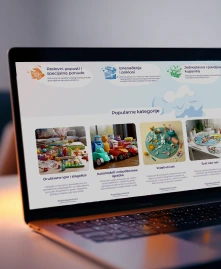Two Prompts That Can Help You Understand Brands Better
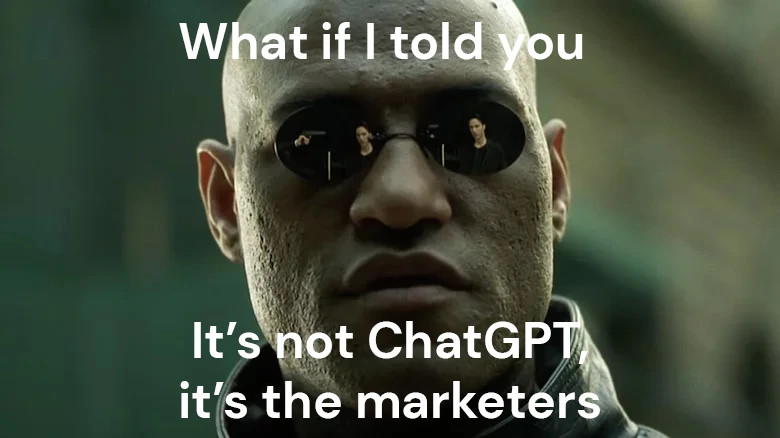
When I came to Mineweb, I was greeted by a brand with an innovative approach to project financing.
One could say that creating a digital marketing strategy is easy at first, but then it gets difficult.
The next step was to create, implement and measure all monthly digital activities for company pages and the CEO’s personal page, including YouTube and LinkedIn. All in English.
In translation… a lot of research, thought and content creation for something I have no idea about and nowhere to look.
I mean… I do, but it’s mostly very general information. This is a special way of financing and a specialized tool for it.
It’s not the banks. Banks don’t understand the industry.
This is a specific financing model where there are no predefined programs, but the entire construction project is analyzed from the point of view of the flow of money and maps how money will enter and leave the project on a weekly basis.
You get a financial picture of the project, but from a cash flow perspective rather than a profit standpoint.
Why do they do it that way?
In order to know exactly what the financing needs of that project are.
Maybe the client thinks he needs $500,000 and he really needs $300,000, and not all at once, but $250,000 in week 4, and $50,000 in week 8, while in week 16 the money will start coming in from the invoices he issued in week 10.
This highly detailed model encourages proactive thinking.
Anything you suggest from digital marketing activities for a brand like this without extremely good research is classic advertising BS.
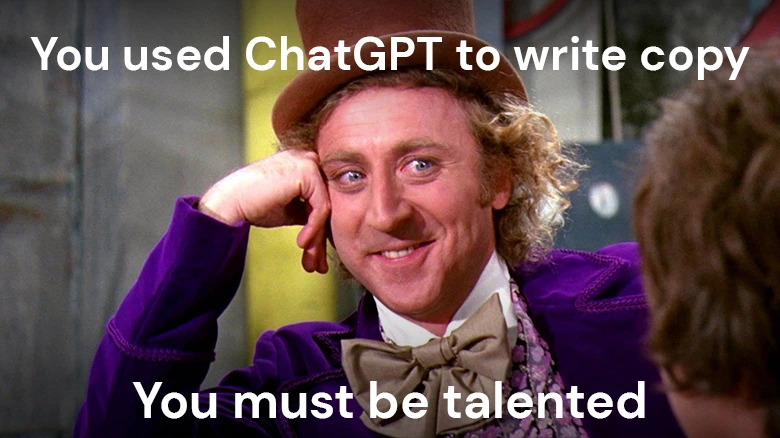
A bunch of thrown words and an attempt to reason about something that we don’t really understand and don’t have a good insight into.
Why am I telling you this?
And what does ChatGPT have to do with it?
My work on this brand coincided somewhere with the growth of ChatGPT.
I read something about the prompts, but it all seemed fake to me.
I also started working there.
I’ll throw in, bad. I’ll put it a little differently, worse. I get tangled up – I get really bad. I get annoyed.
ChatGPT usually produces average results. Even worse than that.
And then I understand. He is not bad per se.
The average digital person is bad at creating content.
ChatGPT mimics that because it’s loaded with LOADS OF TEXTS THAT ARE BAD.
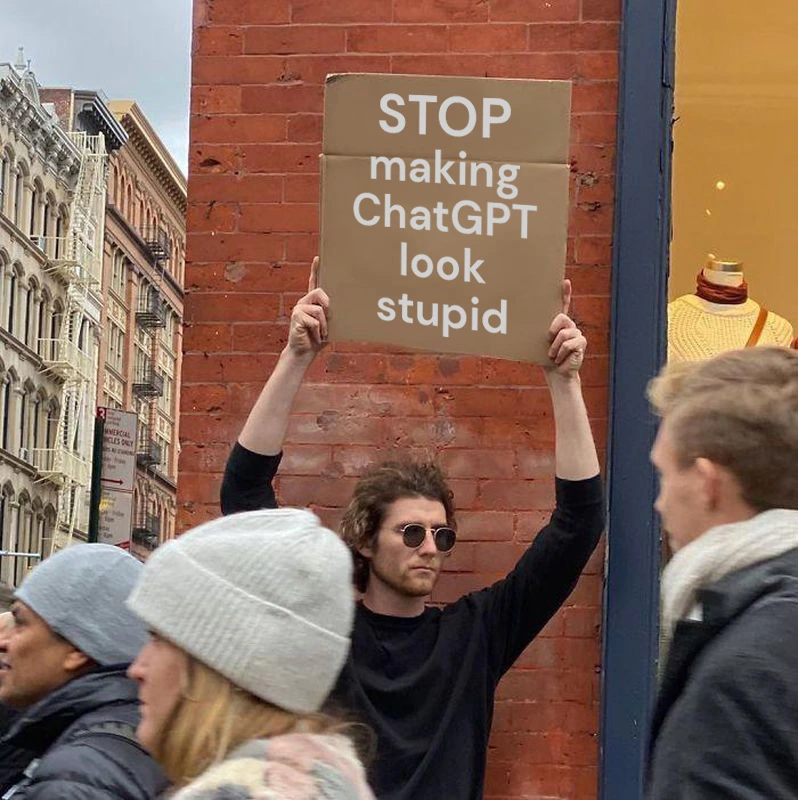
It’s not ChatGPT’s fault, it’s our… However, there is a bright side .
In addition to those forced marketing texts, ChatGPT has a million other pieces of information, that’s certainly true. And he’s a million times faster than me in analysis.
Honestly, I can’t analyze as much data as fast as ChatGPT. He’s quick and efficient, and I’m smart and charming (heh heh).
Below are my two prompts (there really isn’t a better word for this) that I’ve come up with for strategy work.
One for marketing research, the other for content creation.
The first is general, the second is specific.
The first uses available internet data, the second is based on you providing it with specific information.
The former provides understanding and certainty, the latter ensures relevance.
Prompt #1 - Analyze Different Perspectives
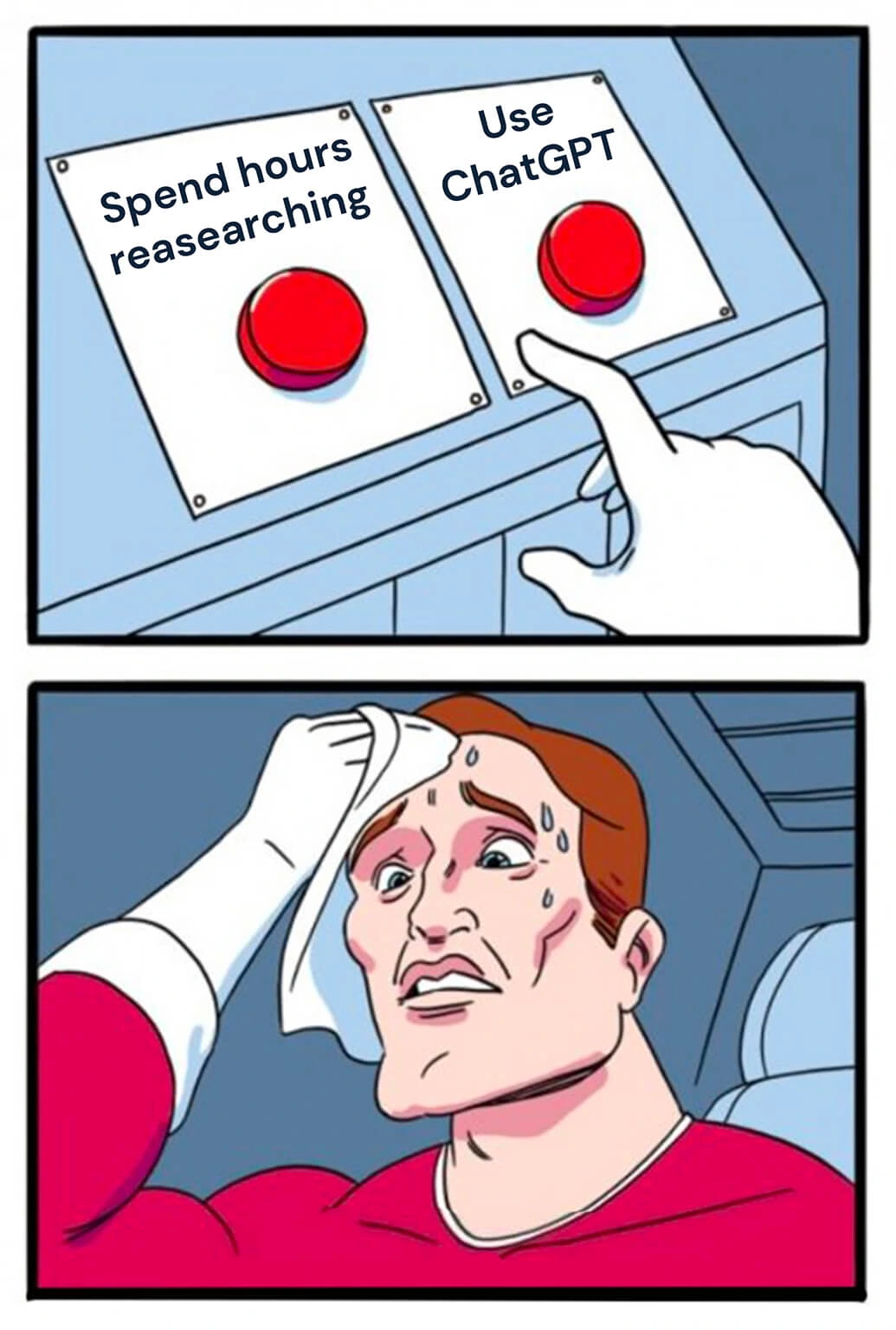
“A change of perspective is worth 80 IQ points” said Alan Kay,
an American scientist who is known for his pioneering work on the development of object-oriented programming and graphical user interfaces.
And who am I not to believe him? And it’s not likely that he wanted it, but he gave the shortest definition of creativity.
And marketing and advertising should be creative. On the one hand, to be original, and on the other hand, to provide new value.
So, perspective is everything in marketing.
Especially since we are biased and subjective.
After a lot of writing and revisions, I came up with this prompt.
It aims to provide a comprehensive picture of how cash flow works in the construction industry in America, who the major players are and how they relate to each other, with a particular focus on the client’s brand.
In translation, it identifies the main problems and challenges within that dynamic, in order to enable a better understanding and more effective resolution of those problems.
Prompt
As a seasoned marketing strategist with over 30 years of experience, your goal is to deliver a detailed and insightful analysis of the “[TOPIC]” ecosystem, focusing on the strategic position and influence of companies providing “short-term construction loans where the working capital is provided at the beginning of a project” within this sector.
Stakeholder Analysis
Roles and Influences: Identify and describe all key stakeholders in the “[TOPIC]” ecosystem. Provide an exhaustive breakdown of their roles, responsibilities, and interrelations, emphasizing how they connect with companies providing “short-term construction loans where the working capital is provided at the beginning of a project”.
Stakeholder Dynamics: Detail the specific interactions and dependencies between these companies and other stakeholders. Highlight the most influential relationships and their implications for strategic positioning.
Market and Strategic Analysis
Competitive Landscape: Analyze the competitive environment specifically for these companies. Identify key competitors, market trends, and potential threats or opportunities.
Strategic Positioning: Evaluate the strategic position of these companies within the market. Discuss how their unique value proposition impacts their market share and customer loyalty in the context of “[TOPIC]” challenges.
Challenges and Solutions
Digital Marketing Challenges: Enumerate and elaborate on ten specific digital marketing challenges faced by these companies, linking each directly to aspects of “[TOPIC].” Provide seasoned insights and potential strategies to overcome these challenges.
Strategic Conflicts
List and describe ten strategic conflicts or difficulties prevalent within the “[TOPIC]” theme, explaining their impact on these companies.
Operational Issues
Detail ten operational challenges specific to these companies, offering well-thought-out recommendations for each.
Actionable Recommendations
Strategic Recommendations
Based on your analysis, suggest actionable and strategic steps these companies should take to improve their market standing and address identified challenges. These recommendations should be innovative, well-reasoned, and directly relevant to their operations and goals.
Unique Insights
Digital Marketing Insights: Provide digital marketing insights that are not readily available on the internet, derived from your extensive experience and deep understanding of the market. These insights should reveal underlying issues, industry pain points, and untapped opportunities in the “[TOPIC]” sector.
Deliverable Expectations
The analysis should not only be comprehensive but also exhibit a high level of expertise, with a focus on providing unique, actionable insights that are tailored specifically for these companies. Avoid generalizations and aim for precision and strategic depth.
Deliver results in five separate messages, and ask me to continue.
[TOPIC] = [CONSTRUCTION CASH FLOW]
Result
For someone who was confused and knew practically nothing, within seconds I had context and initial understanding:
- perspective of all stakeholders in their industry
- the dynamics of my client’s cooperation with them, their target group
- recognition of competition, trends, opportunities and threats
- what advantages does my client have and how can he strategically position himself
- challenges my client may face when it comes to digital marketing as well as strategic conflicts and operational challenges
- perspectives and insights that can help me strategy creation
- any specific recommendations I should think about
Not bad for beginning?
Let’s be clear, this is not a substitute for your work. It has to be done.
But with prompts like these, the goal is to make more efficient use of the time you have.
If you understand this in the right way, it is very important that you read everything he puts out, and digest what is written there.
But when you have a framework to follow, you will also have security.
Now you have all the perspectives you need to think about as a digital.
Because that way you overcome the stereotype of lack of knowledge.
And realistically, we all know a little.
And from the distance of one year, I can tell you with full responsibility that everything written above was true, correct and relevant.
Prompt #2 - Generate Content Guidelines
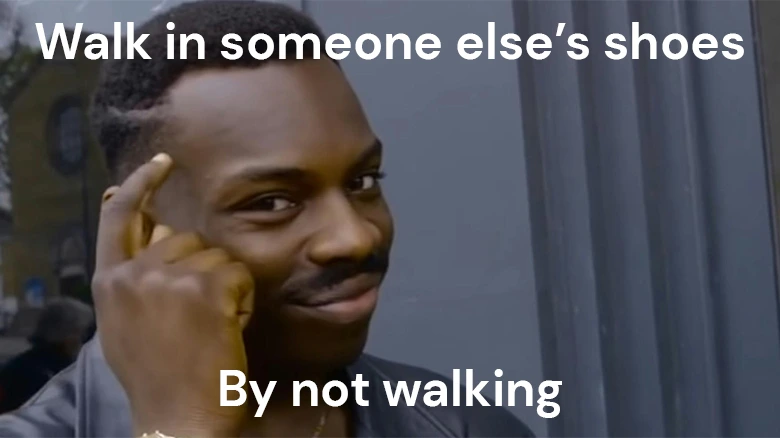
There is another big problem that every digital content creator has.
And that is that he is not neither a client nor a brand.
He needs to be – to step into those shoes quickly.
Whoever says he’s good at it, let me tell you right now – he’s not telling the truth.
How can I, in a few weeks and months, know someone’s business and brand better than people who have been in it for years?
Research is a serious part of marketing activities, so I approached the creation part of all the content ideas and tactics a little differently.
Since then I have always used this approach.
More specifically…
I downloaded all the texts from their website and blog into one PDF.
I transcribed all podcasts where the client was a guest.
Then saved that as a PDF as well. The same for every review. Video clip.
For every answer the client gave me in the meeting. For everything.
And transcribed-copied-saved-uploaded it all to ChatGPT.
What is the idea behind all this?
To extract relevant content ideas from everything I have.
Anything you can find about a brand and their service can be, in some way, a quality piece of content. Literally everything. When I say quality, I mean creative – that it has real depth and value.
Prompt
I have attached a PDF file relevant to our project. This task incorporates a specific transcript from a podcast featuring a cash flow expert.
I need you to generate 50 highly actionable and specific digital marketing recommendations from this resource, organized into five separate messages, each containing 10 recommendations. After each segment, please check if I would like to proceed with the next set.
For each recommendation, conduct a thorough sentence-by-sentence analysis of the PDF document. Outline and list each piece of digital marketing content with precision, detailing:
- Unique Idea
Describe the unique concept or angle.
- Theme and Content Strand
Explain the central theme and how it ties into our overall content strategy.
- Target Audience
Specify which segment of our audience this content will best engage (e.g., subcontractors).
- Digital Channel
Identify the most effective channel for this content (LinkedIn, YouTube, website).
- Creative Content Format
Recommend the format (e.g., video, blog post, infographic).
- Exact Placement
Suggest where and how this content should be placed on the chosen channel (e.g., LinkedIn article, YouTube series, website landing page).
- Reference in Document: Mention the specific part of the PDF (exact quote or idea from the cash flow expert – do not mention his name) that inspired this content piece. Ensure references are specific and not generic sentences that can be found elsewhere.
Focus primarily on LinkedIn, YouTube, and website content. Generate ultra-specific, industry-related pieces of content tailored to subcontractors.
Ensure each content piece is well-reasoned, detailed, and closely matches the insights shared by the cash flow expert. Use precise language, avoiding vagueness, to ensure that every word adds value.
Example format for each recommendation (use this just for format purposes):
- Unique Idea
Highlight the importance of early project funding for subcontractors.
- Theme and Content Strand
Financial planning and resource management.
- Target Audience
Subcontractors looking to improve cash flow.
- Digital Channel
LinkedIn.
- Creative Content Format
Case study post.
- Exact Placement
LinkedIn article featuring real-life examples and quotes from the transcript.
- Reference in Document
“As the cash flow expert mentioned in the podcast, ‘Securing early funding can make or break a project for subcontractors’.”
Do not mention vague references or sentences that can be found elsewhere. Ensure each reference is specific to the cash flow expert’s insights from the transcript.
Result
For the purposes of this blog post, I ONLY used one podcast.
And got an excellent basis for content based on those very materials. Just look at some of the topics and ideas that ChatGpt covered for me in a minute:
- Highlight Early Project Funding Importance
- Educate on Managing Accounts Payable
- Addressing Cash Flow Gaps in Large Projects
- Addressing Performance-Based Financing Challenges
- Solutions for Long Payment Cycles
- Importance of Building Relationships in Financing
- Discuss Challenges of Performance Bonds
- Strategies for Managing Project Delays
- Solutions for Financing Large Orders
- Tips for Financial Planning in Large Projects
- Educate on Performance Risk Management
- Strategies for Handling Unexpected Expenses
- Financial Education for New Contractors
- Case Study: Overcoming Initial Growth Challenges
- Addressing Labor Shortages in Construction
“Try to walk in the client’s shoes” is not possible when you are digital.
“Try to walk in the ChatGPT client’s shoes”
And that is already possible.
And the point is not only that you will use something above for specific content.
The point is that you have integrated what the client knows into your content. That is – to be sure that you are covering very important topics.
You got 50 specific ideas and a reference where it was mentioned. Now imagine when you process all the materials you have in this way. Through an hour or two of work, you get a good understanding of business.
Even if you play with the questions, you analyze what is most often talked about, which topics are “hot”, what bothers the target group the most, which words the client particularly emphasizes, where you can read more about it…
ChatGPT makes you a better creator that way. Because he’s fast.
Alan Kay also said that most creative work is a transition from one context to another. And he said that our job is to always remind ourselves that there is more context than what we think our reality is.
If you use bad materials, you will get a bad product. ChatGPT can use quality materials to create the basis for a good product.
Give him those ingredients.
Do not rely only on his “smarts”. Already on his analysis and speed. Analyze prospects strategically. You work.
Deeply understand everything the client/brand/product/service knows.
And you will get better. Both formally and essentially.






